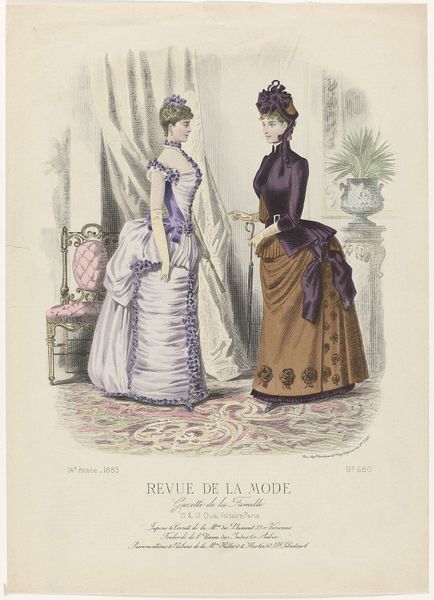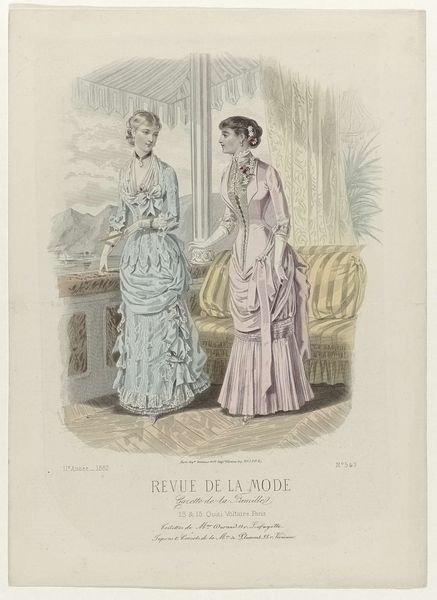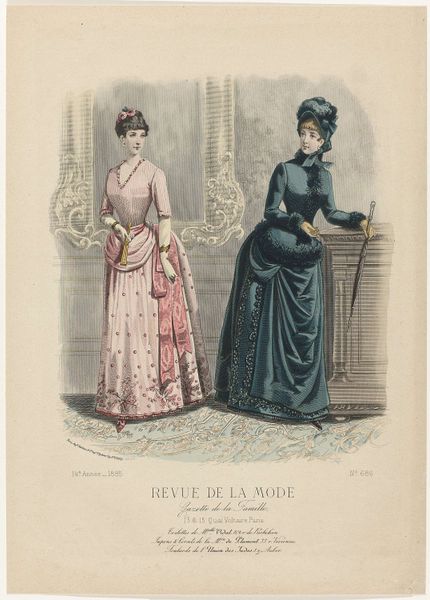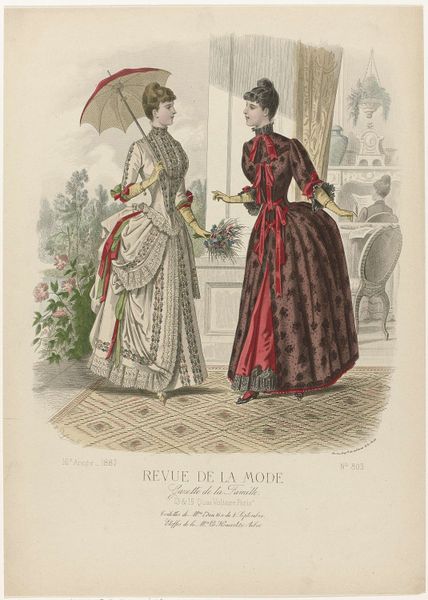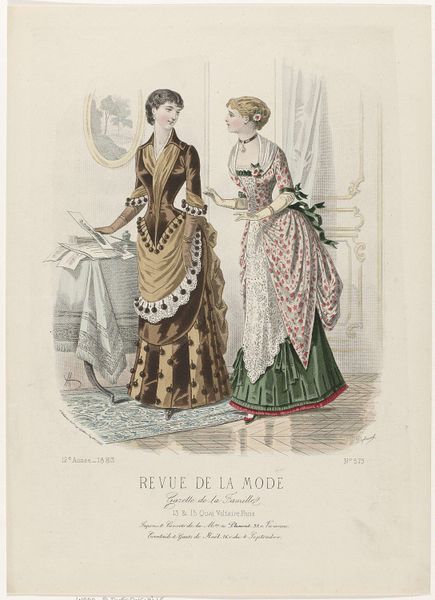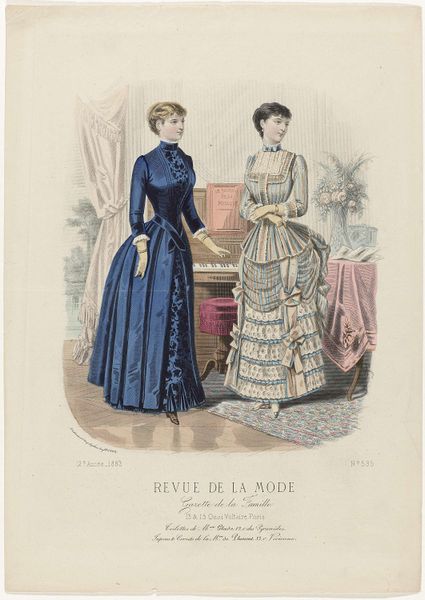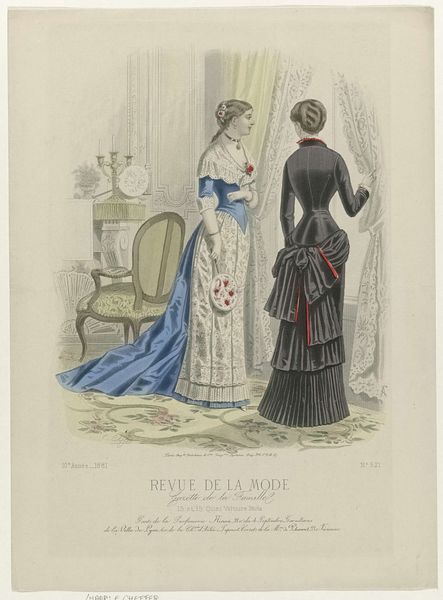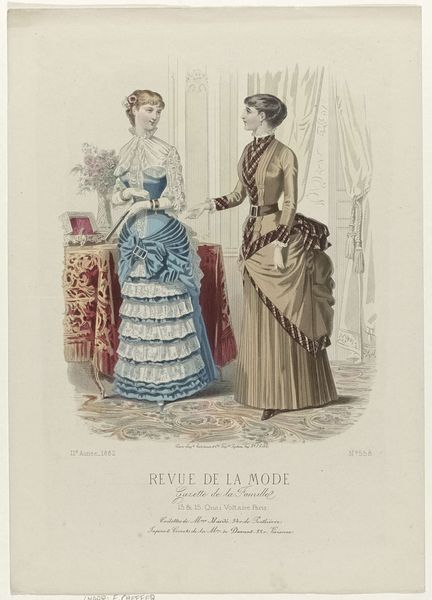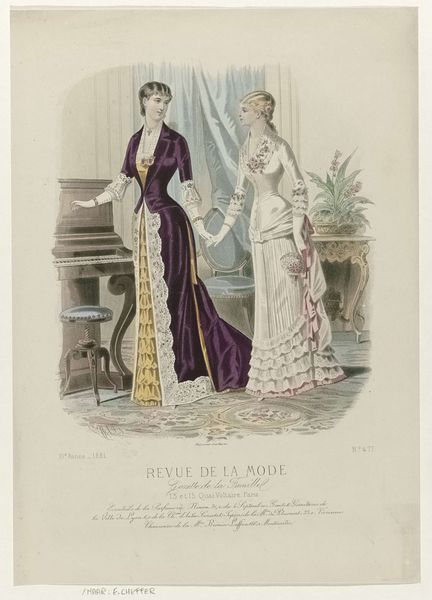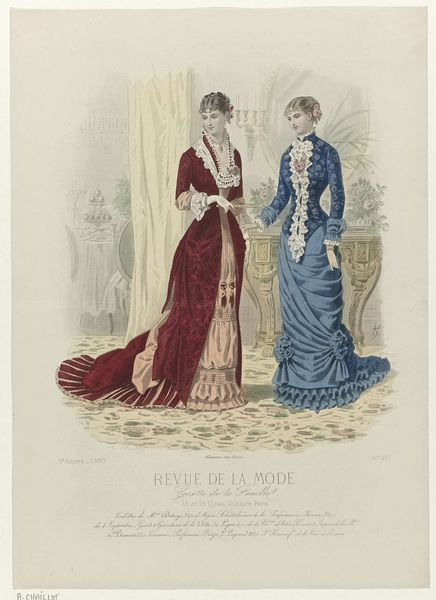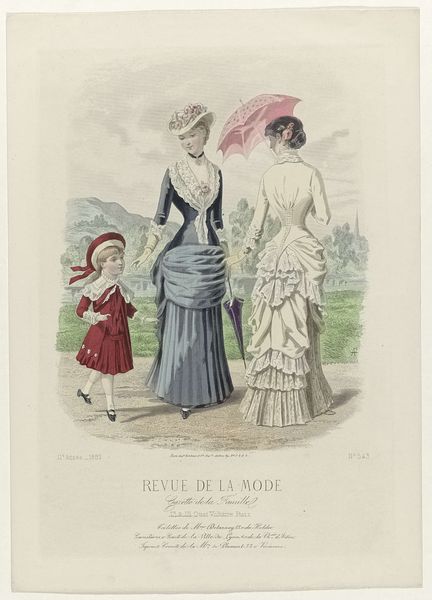
Revue de la Mode, Gazette de la Famille, dimanche 5 novembre 1882, 11e année, No. 566: Toilettes de Mme Duluc (...) 1882
0:00
0:00
Dimensions: height 375 mm, width 265 mm
Copyright: Rijks Museum: Open Domain
Curator: What a striking image! Here we have a fashion plate from 1882, specifically "Revue de la Mode, Gazette de la Famille, dimanche 5 novembre 1882," showcasing "Toilettes de Mme Duluc." The artwork is unsigned. It combines drawing, print, and watercolor. Editor: My eye is immediately drawn to the textures. The ruffles and folds—so many layers! And that black fabric looks like it would be heavy and sensuous at the same time. Is it velvet, do you think? It’s practically oozing with a dark, theatrical sensibility. Curator: Absolutely! The contrasting styles evoke specific roles of women. Look at the lady in pink. The lace and flowers emphasize delicacy and romanticism. It is a specific construction of femininity with those pastel colors, lace and red bow to pull you in as something innocent and romantic. Whereas the one in dark attire projects severity and power through dark coloring and sharp lines, as if in control of a serious destiny. Editor: Right, and the print aspect itself—a mass-produced image in a fashion magazine. Think of all the labor, not just in designing and making the dresses but also in creating the plate, printing the images, and distributing the magazine. The sheer number of hands involved in circulating these aspirational ideals is impressive. Curator: And remember, the dresses act as social signifiers, communicating the wearer's class, status, and adherence to fashion norms. There is a certain coded language to fashion. The image functions as a kind of mirror reflecting not just outward appearance, but internal aspirations. These two silhouettes really evoke the range of available personas during this era, no? Editor: I agree. The production and consumption of such images were significant economic activities that connected to women's identities and labor. I also keep imagining what those textiles *felt* like. That dark one has to be heavy. All that draping and volume! Must have taken great skill to manufacture the complex layering of the styles to create what can only be described as fashion architecture. Curator: It does suggest skill and artistry in manufacture—yes, absolutely a complex piece. I love the echo of those values resonating to our time as well. Editor: Definitely! And the image itself speaks to so much labor that remains mostly unseen.
Comments
No comments
Be the first to comment and join the conversation on the ultimate creative platform.
